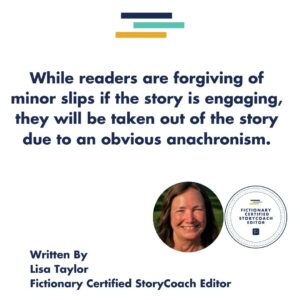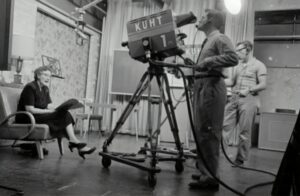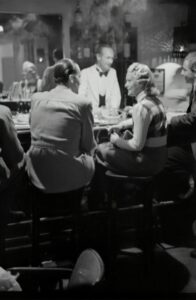
Creating historical fiction settings is essential to writing great historical fiction—the name says it all! The setting, in time and space, sets the boundaries and expectations for your characters and plot.
Your choice shapes your story.
You might be drawn to follow a family story that leads to your era or a visit to museums, monuments or historic sites might spark a story. Now, you want to write historical fiction!
What is Historical Fiction?
First, what is historical fiction?At first glance, the definition seems remarkably simple: a story set in the past. But, how long ago is “the past”?
Generally, 50 years is a benchmark. But, 50 years from when?
The Great Gatsby is set well over 50 years ago but was written in that time period. Often, the definition includes the requirement for the author to do research on the time period. So, with that addition to the definition, The Great Gatsby is not historical fiction.
Yet, another definition looks at the essential nature of the setting or time period to the story.
If historical fiction settings are so integral to the plot that this story could not exist in another time period, that is historical fiction. Whichever definition you subscribe to, it is evident that the goal is to create historical fiction settings that bring the past to life.
Heather Wood has outlined the elements of historical fiction and given a range of examples of sub-genres in her blog: Historical Fiction: Definition and Examples. In that blog, she notes that the most important element of the genre is creating historical fiction settings.

Creating Historical Fiction Settings
Diving into a bygone time and place requires passion and commitment.
Detailed research can include:
- Food,
- Clothing,
- Entertainment,
- Housing,
- Work, and;
- Political Systems, etc.
To fully immerse yourself into the time period, you might even create costumes, meals and listen to the music or news of the time.
While much is available online, you may want to explore the places yourself. Moving through the space will help you ensure that your characters are grounded in the truly immersive historical fiction settings.
Gathering documents, maps and pictures can help keep your vision consistent.
If there are significant objects in your story, try to create or buy a replica to keep as inspiration and a touchstone.
Historical fiction settings require world-building!
Whether you use a cork-board or world-building software, keep track of the geography and cultural aspects of your setting. Out of this world come your characters and their actions.
Make it Real
Immerse the reader in your world through their senses!
We perceive the world through our senses. By using sensory detail, you draw on your reader’s natural connection to the world. Engaging the senses with deliberate and purposeful detail opens the reader to imagining the complex setting for your story.
While you have researched and absorbed every detail about the time period and place, careful selection of sensory detail will hook your readers without overwhelming them.
As you edit your scenes, keep track of the senses used. Look for overuse or avoidance of any sense.
Usually, you want to create a variety for your reader.
There are exceptions. If your character has a keen sense of smell, like Grenouille in Perfume, the use of the sense becomes part of our understanding of the protagonist.
For a closer look at using senses and avoiding filtering to improve your settings, check out Shane Millar’s post on Settings for a Story: Fantasy novel basics and examples. While the examples are from fantasy novels, the setting development and advice are the same!

Choosing Historical Fiction Settings
As you are searching for new historical fiction settings, consider some of these ideas.
Consider the community
Times of change or revolution begin with tension.
In Chains, Laurie Halse Anderson uses the Revolutionary War as a setting that creates unrelenting tension for her main character, Isabel.
Start with a character
Many authors are inspired by real historical figures.
Philippa Gregory is lauded for her stories exploring the famous and not-so-famous through novels like The White Queen and The Other Boleyn Girl.
Combine the community with character
Authors use the outsiders in a community to infuse tension and to explore the morals of both the past and the present.
In The Witch of Blackbird Pond, Elizabeth George Speare explores how Kit fails to fit into her new Puritan community.
Consider modern characters in historical fiction settings
If you are drawn to historical fiction settings, but have a modern character knocking at the door, there are options.
Diana Gabaldon claims Claire wouldn’t stop being modern, so she found a way to get her back in time. For more information about this inspiration, read this article: from The Scots Magazine.
If you are still struggling with ideas for choosing the best setting for your story, check out Sherry Leclear’s article: 4 Tips for Choosing a Story Setting.

Final Reminders
Avoid anachronisms!
While readers are forgiving of minor slips if the story is engaging, they will be taken out of the story due to an obvious anachronism.
Keep computers away from your protagonist in the Middle Ages.
Ground your major plot points in your historical fiction settings. As you edit your story, examine your key plot point scenes.
- Could your inciting incident happen in a different time period?
- Can you make the obstacles that force your protagonist to engage in the story goal part of the community she lives in or linked to the constraints of her gender in this time?
- How can you integrate historical fiction settings into the climax?
By making the setting instrumental to your plot, you earn your reader’s trust. This story had to happen here, in this time.
Let your characters speak to your readers because they show us what it is like to be human in any time period. Your historical fiction can transcend time and show us that we are all the same in important ways.
Historical fiction settings are the key element in this genre. Have fun as you immerse yourself and your readers in a new, old world and bring the past to life.
Article Written by Lisa Taylor

Stories are powerful. Through my experience as an educator and librarian, I’ve explored how stories work and supported writers in finding their voices and honing their craft.
As a Fictionary Certified StoryCoach Editor, I offer a thorough, objective structural story edit that honours your voice, recognises and celebrates your skill, and offers clear, actionable ideas on ways to make your story shine even more. You can reach me through the Fictionary Online Community.

